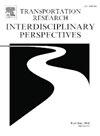Comparative analysis of upper body postural angles and their association with neck pain in car and motorcycle drivers
IF 3.8
Q2 TRANSPORTATION
Transportation Research Interdisciplinary Perspectives
Pub Date : 2025-07-01
DOI:10.1016/j.trip.2025.101534
引用次数: 0
Abstract
Purpose
This study aimed to assess upper-body postural angles and neck pain among car drivers and motorcycle drivers separately, and to compare these outcomes between the two groups.
Methods
This cross-sectional study comprised a total of 200 participants, with an equal distribution between car drivers (n = 100) and motorcycle drivers (n = 100). To evaluate upper-body postural alignment, measurements of the craniovertebral angle, sagittal head tilt, coronal head tilt, and thoracic flexion angle were obtained.The severity of neck pain was measured using a visual analog scale. The data were analysed to compare the upper-body postural angle and neck pain between driver groups.
Result
The study found that car drivers had significantly higher mean craniovertebral angle (CVA) of 52.6 degree (°) compared to 47.2° in motorcycle drivers (p = 0.0001), a lower sagittal head tilt of 10.2° versus 12.3° (p = 0.0001), and a lower thoracic flexion of 26.4° versus 30.7 (p = 0.023). However, motorcycle drivers reported a significantly higher mean neck pain score of 6.1, compared to 5.5 in car drivers (p = 0.0001). Thus, the prevalence of neck pain was higher in motorcycle driver (54 %) compared to 36 % in car drivers.
Conclusion
This study found that both car and motorcycle drivers had distinct upper-body postural angles and neck pain levels. When comparing the two groups, motorcycle drivers showed greater deviations in craniovertebral and thoracic flexion angles and a higher prevalence of neck pain than car drivers. These results highlight the need for targeted interventions to address neck health in both populations.
汽车和摩托车驾驶员上半身姿势角度及其与颈部疼痛关系的比较分析
目的本研究旨在分别评估汽车司机和摩托车司机的上肢姿势角度和颈部疼痛,并比较两组之间的结果。方法横断面研究共纳入200名参与者,平均分布在汽车司机(n = 100)和摩托车司机(n = 100)之间。为了评估上半身姿势,测量了颅椎角、矢状头倾斜、冠状头倾斜和胸椎屈曲角。颈部疼痛的严重程度用视觉模拟量表测量。对数据进行分析,以比较驾驶员组之间的上半身姿势角度和颈部疼痛。结果研究发现,汽车司机的平均颅椎角(CVA)为52.6°,摩托车司机为47.2°(p = 0.0001),头部矢状位下倾角为10.2°,摩托车司机为12.3°(p = 0.0001),胸椎下屈度为26.4°,摩托车司机为30.7°(p = 0.023)。然而,摩托车司机的平均颈部疼痛评分为6.1,而汽车司机的平均颈部疼痛评分为5.5 (p = 0.0001)。因此,摩托车司机颈部疼痛的患病率(54%)高于汽车司机的36%。结论汽车司机和摩托车司机在上半身姿势角度和颈部疼痛程度上存在明显差异。当比较两组时,摩托车驾驶员比汽车驾驶员表现出更大的颅椎和胸椎屈曲角度偏差和更高的颈部疼痛患病率。这些结果强调需要有针对性的干预措施,以解决颈部健康在这两个人群。
本文章由计算机程序翻译,如有差异,请以英文原文为准。
求助全文
约1分钟内获得全文
求助全文
来源期刊

Transportation Research Interdisciplinary Perspectives
Engineering-Automotive Engineering
CiteScore
12.90
自引率
0.00%
发文量
185
审稿时长
22 weeks
 求助内容:
求助内容: 应助结果提醒方式:
应助结果提醒方式:


